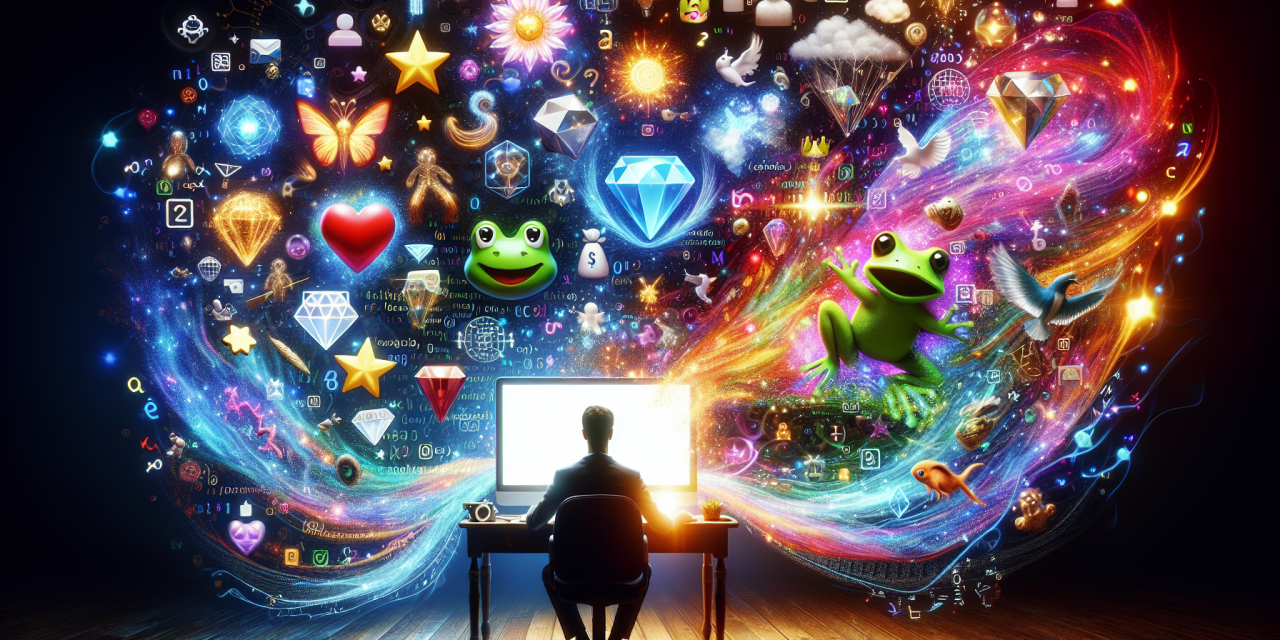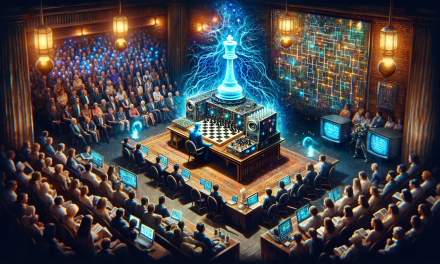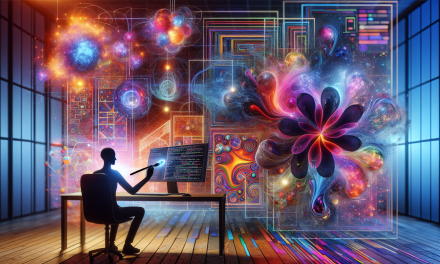Picture this: you’re sitting in front of a blank screen, cursor blinking expectantly. But instead of trying to write the next great novel or craft the perfect email, you’re about to tell a story using nothing but tiny pictographs—emojis. And here’s the twist: you’re going to teach a computer to help you do it.
Welcome to the delightful intersection where code meets creativity, where algorithms dance with imagination, and where a simple string of 🌟🐸👑 can transport someone into an entirely new world. Today, we’re exploring how code isn’t just about crunching numbers or managing databases—it’s a genuine form of artistic expression, as personal and powerful as any paintbrush or piano.
Why Emojis Make Perfect Story Ingredients
Think about the last time you sent a text message. Chances are, you threw in an emoji or two without even thinking about it. That 😂 says more than “I find this amusing”—it conveys tone, adds personality, and creates an immediate emotional connection. Emojis are like tiny universal symbols that transcend language barriers, age differences, and cultural boundaries.
Now imagine if we treated emojis like the building blocks of a story. Each emoji becomes a character, a setting, an action, or an emotion. A 🏠 isn’t just a house—it could be home base in an adventure, a cozy refuge during a storm, or the starting point of a grand journey. The beauty lies in how our minds automatically fill in the gaps, creating rich narratives from these simple symbols.
This is exactly what makes emoji storytelling such a brilliant coding exercise. You’re not just learning syntax or debugging logic—you’re exploring how compression and interpretation work. How much story can you pack into the smallest possible space? How do you create meaning through sequence and context?
The Art of Algorithmic Storytelling
When you write an algorithm to generate emoji stories, you’re essentially becoming a director of digital theater. You need to think about story structure, character development, pacing, and resolution—all while working within the constraints of your chosen programming language and the emoji character set.
Let’s break this down like the coder-storytellers we’re becoming. Every good story has certain elements: characters, conflict, progression, and resolution. In emoji land, your 🦸♀️ might face off against a 🐉, journey through a 🌲, discover a 💎, and return home a changed hero. Your algorithm needs to understand these narrative beats and arrange them in ways that feel satisfying.
But here’s where it gets really interesting: your code doesn’t just tell one story. It becomes a story-generating machine, capable of creating infinite variations based on the rules you establish. Maybe your hero changes each time—sometimes it’s a 👩🚀, sometimes a 🐱, sometimes a 🤖. Maybe the obstacles shift, the settings transform, the endings surprise even you.
Building Your Emoji Story Engine
The wonderful thing about this challenge is that you can approach it from countless angles, regardless of your coding experience. If you’re working with a language like Python, you might create arrays of characters, settings, and actions, then use random selection to weave them together. If you’re prompt-engineering with an AI, you’re essentially writing creative directions for a very sophisticated co-author.
Start simple: create categories. Your characters might be animals (🐕🐱🦋), your settings might be places (🏔️🏖️🏙️), and your actions might be movements (🏃♀️💃🚶♂️). Then think about story logic. Does your 🐧 make sense in the 🏜️? Maybe that unexpected combination creates the most interesting story of all!
As you develop your algorithm, you’re making creative decisions that mirror those of any artist. How do you want to handle transitions? Should your stories follow a classic three-act structure, or do you prefer more experimental, slice-of-life vignettes? Do you want recurring characters that your audience grows attached to, or fresh faces in every tale?
The Magic of Constraint-Based Creativity
Here’s something fascinating that happens when you commit to emoji storytelling: the limitations actually fuel your imagination. When you can only use symbols that exist in the Unicode standard, you’re forced to think metaphorically, symbolically, and abstractly. A ⚡ might represent anger, sudden inspiration, or supernatural power, depending on context.
This constraint-based creativity is fundamental to how code works as an artistic medium. Every programming language has its own personality, its own strengths and quirks. Working within these boundaries doesn’t limit your expression—it gives it shape, focus, and often surprising beauty.
Consider how poets work within the constraints of haiku or sonnets, how musicians work within time signatures and scales. Your emoji story algorithm is following this same tradition, using limitations to create something more focused and powerful than total freedom might allow.
Reading Between the Icons
The most delightful aspect of emoji storytelling is how it engages the reader’s imagination. When someone sees 🌙➡️🌅🐦, their brain automatically starts constructing narrative: night becoming day, perhaps witnessed by a early-rising bird. But each reader brings their own experiences and interpretations to these symbols.
This interpretive quality is what makes your emoji story algorithm genuinely expressive. You’re not just outputting literal sequences—you’re creating starting points for imagination. Your code becomes a collaborative storyteller, providing the scaffolding for stories that complete themselves in readers’ minds.
Think about how this mirrors other forms of code-as-expression you encounter daily. The algorithm that suggests your next favorite song isn’t just matching data patterns—it’s making creative leaps about what might move you emotionally. The logic that arranges your photos into memory collections isn’t just organizing files—it’s curating moments that tell the story of your life.
Your Creative Challenge Awaits
Whether you’re writing traditional code or crafting detailed prompts for AI systems, this emoji storytelling challenge reveals something profound about programming as a creative medium. You’re not just solving computational problems—you’re exploring how structure and spontaneity can dance together, how simple elements can combine into complex meanings, and how code can carry emotional resonance.
So dive in. Start with a simple story structure: character meets obstacle, attempts solution, discovers outcome. Pick your emoji vocabulary and let your algorithm surprise you. Maybe you’ll generate a tale about a 🚀 that discovers a 💫 and shares it with the 🌍. Maybe you’ll craft something entirely unexpected that makes you smile.
Remember, every line of code you write is a creative choice. The variable names you select, the logic flows you design, the edge cases you consider—all of these decisions shape not just how your program functions, but how it expresses your unique perspective as a digital storyteller. Your emoji story algorithm isn’t just code that works—it’s code that speaks, dreams, and invites others to imagine alongside it.








